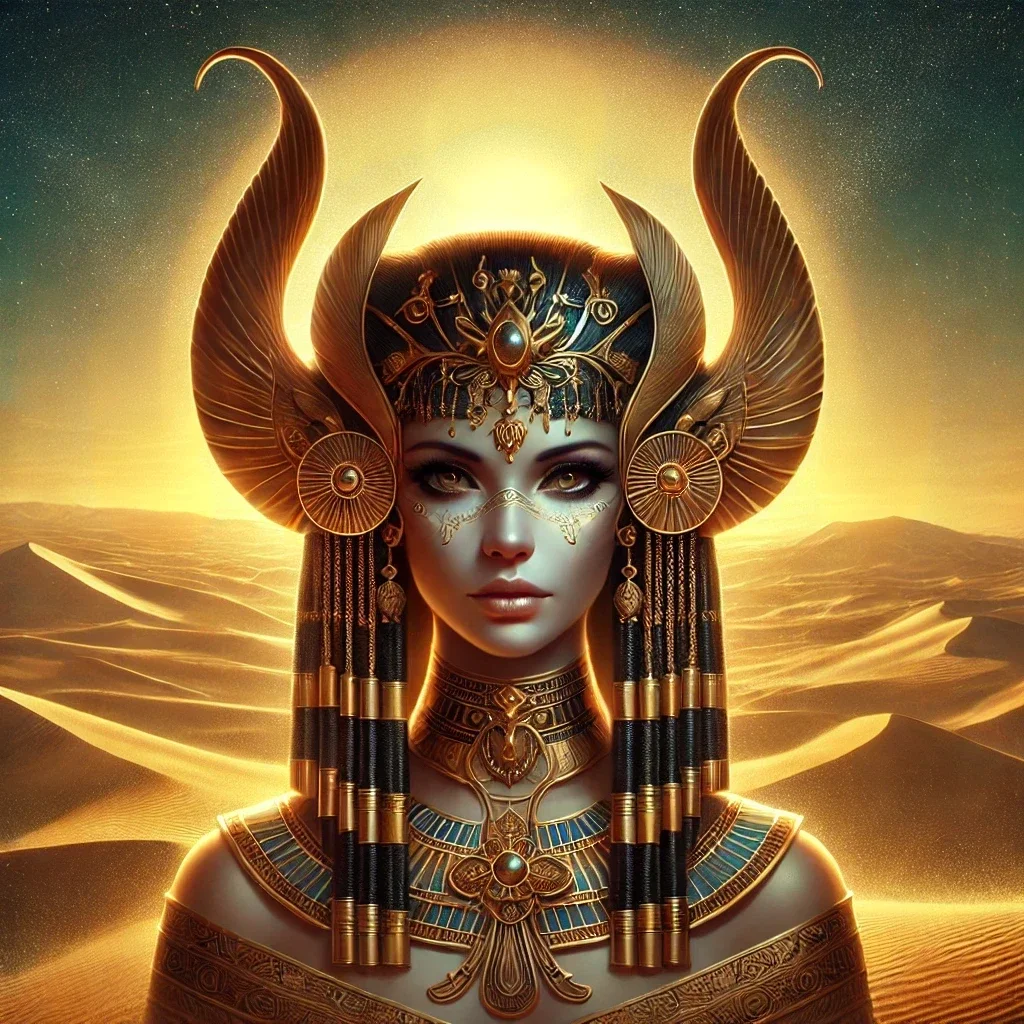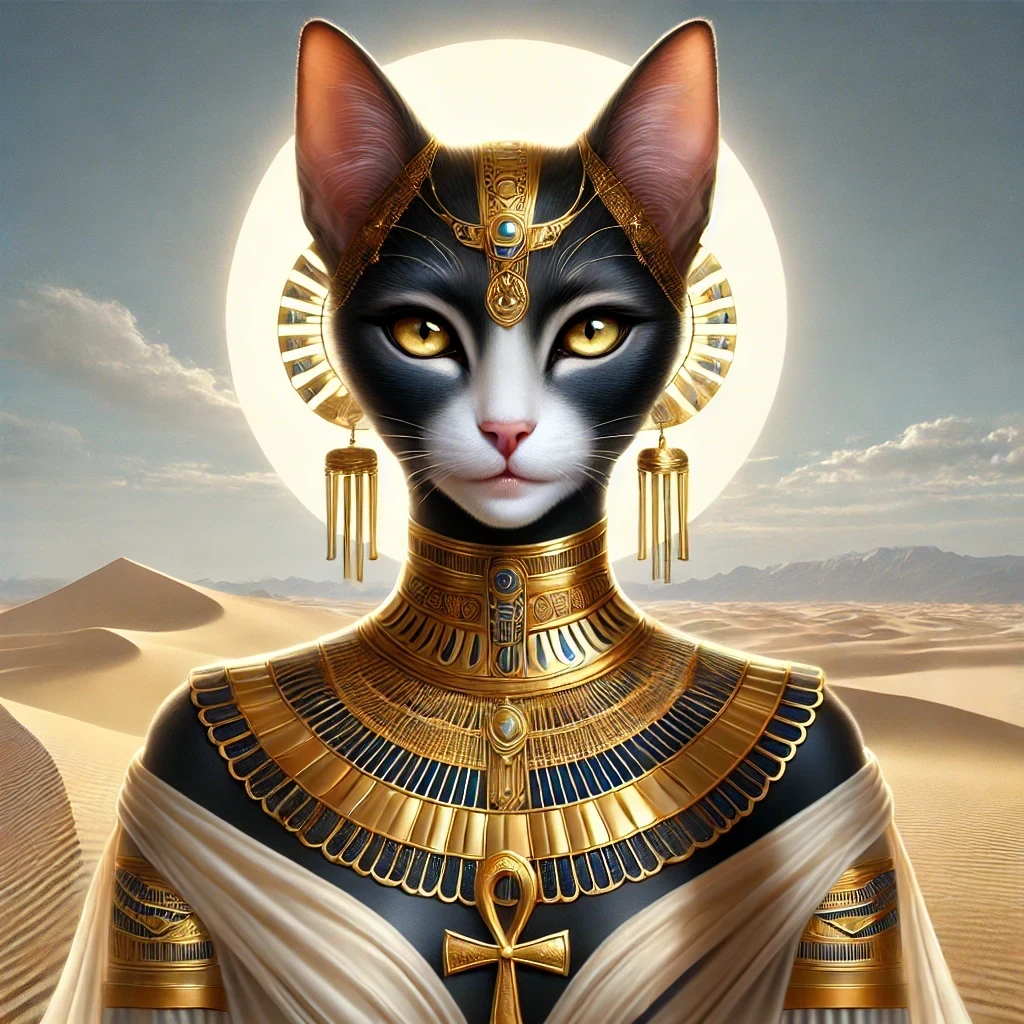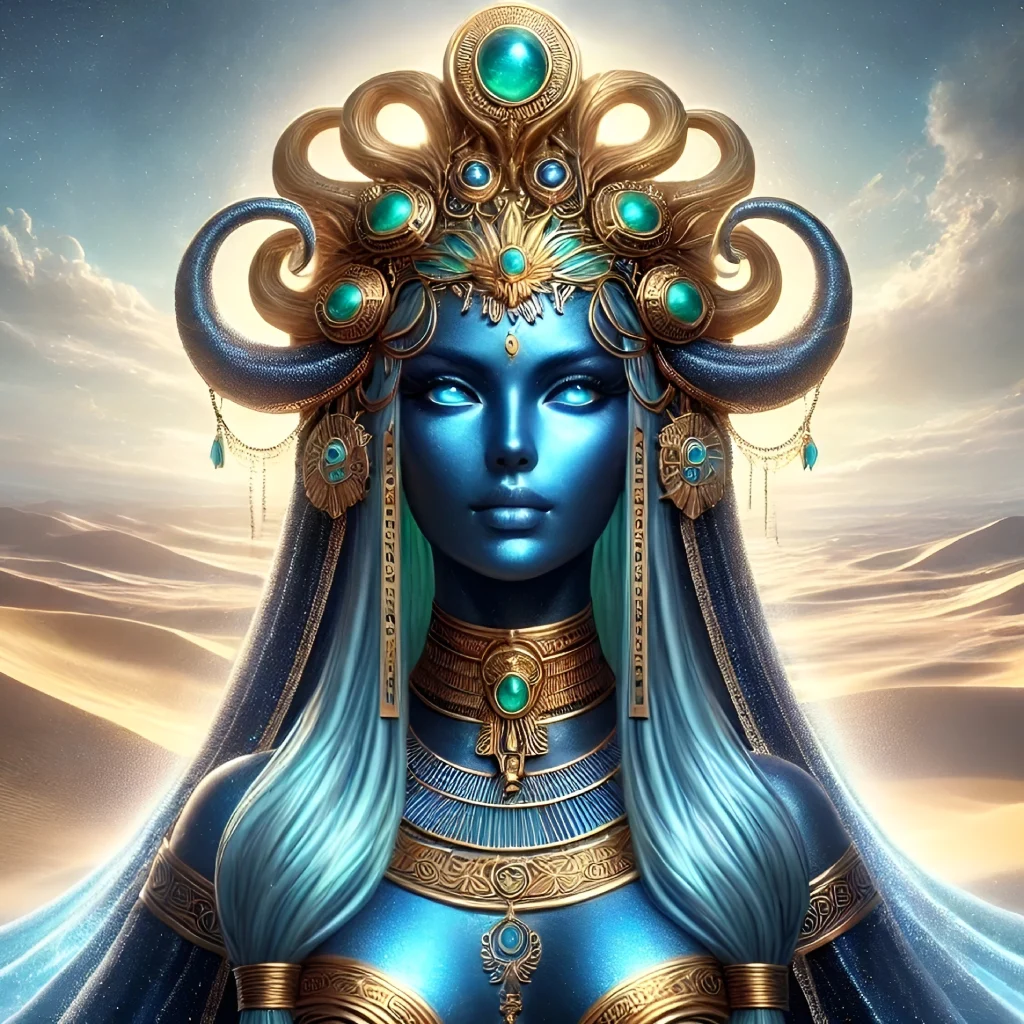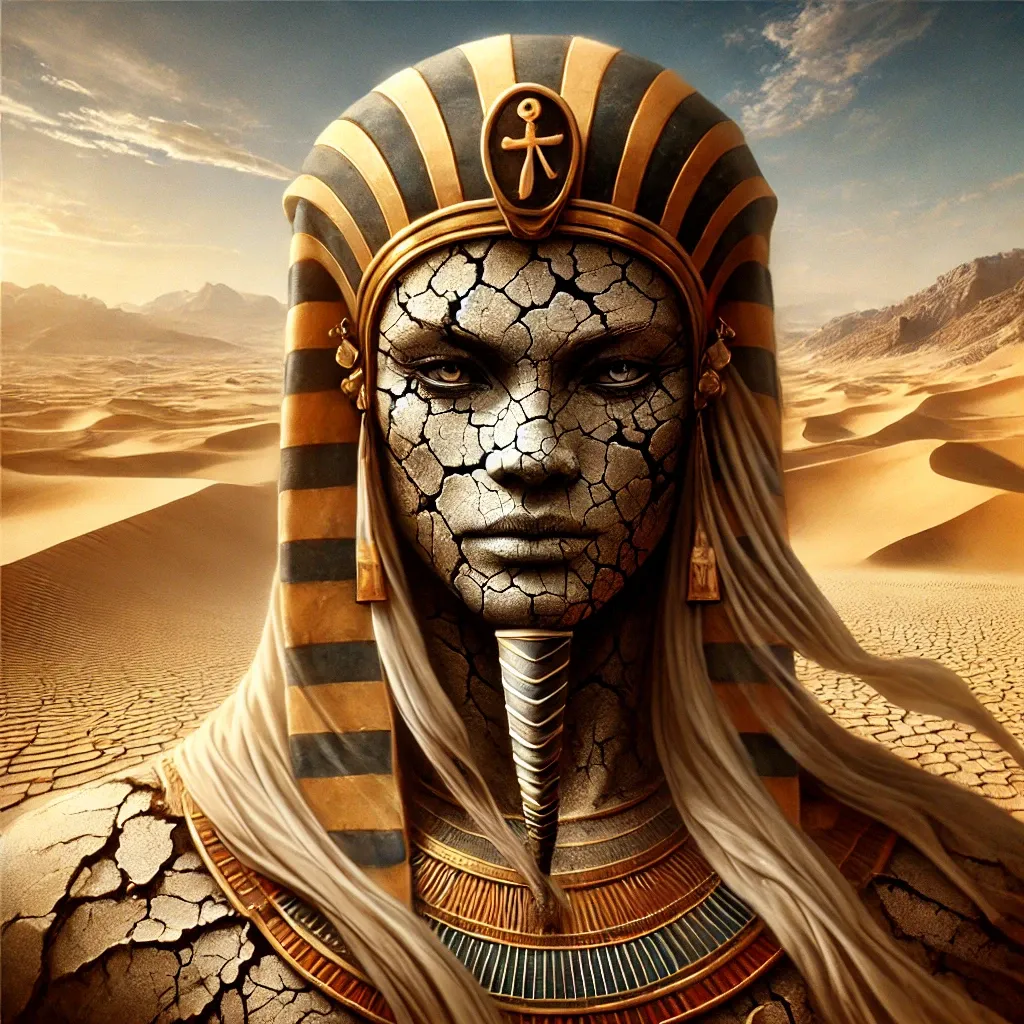Bat, an enigmatic deity from ancient Egypt, was revered in the region of Sistrum, a land of mystery and sacred ritual. This deity’s name derives from the ancient Egyptian term “bat,” meaning “soul,” and she was often referred to as the Lady of Stars or the Mistress of Music. Her veneration predates many well-known Egyptian gods, positioning her as a critical figure in understanding early Egyptian religion and its evolution.
Origins
Predynastic Roots
The origins of this deity trace back to the early agrarian societies of Upper Egypt, where cattle held immense symbolic and practical importance. Bat’s association with cows symbolizes abundance, nourishment, and fertility—qualities essential to survival in the arid landscapes along the Nile.
Integration into the Pantheon
During the Old Kingdom (c. 2686–2181 BCE), she became increasingly intertwined with Hathor. Despite their similarities, the two maintained distinct iconographies and cult centers. While Hathor gained prominence in Dendera, Bat’s veneration centered on the region of Seshesh, later known as Hu.
Appearance
Visual Depictions
Bat is most commonly represented as a cow or a woman with bovine features, including ears or horns. Her human form often incorporates a celestial disk or stars, underscoring her cosmic connections. Unlike Hathor, her iconography includes inward-curving horns, setting her apart visually and symbolically.
Unique Features
One of her defining symbols is the sistrum, a musical instrument associated with joy and divine harmony. It is believed that her presence inspired its creation, emphasizing her role in fostering balance and unity.
Abilities
Protector of Harmony
Bat’s primary power lies in her ability to harmonize opposites—uniting the earthly and celestial, the physical and spiritual. This duality reflects the ancient Egyptian worldview of balance (ma’at) as the foundation of existence.
Guide to the Afterlife
The goddess also played a role in the afterlife, guiding souls through the perilous journey to the Field of Reeds. Her presence ensured safe passage and cosmic equilibrium for the deceased.
Influence Over Music and Ritual
As a patroness of the sistrum, she held sway over musical rituals, believed to please the gods and secure divine favor. Her influence extended to celebrations of fertility and renewal.
Myths
The Creation of Harmony
One notable myth recounts how Bat intervened during a celestial conflict, restoring balance among the gods. In this tale, her calming presence and music resolved discord, reaffirming her role as a mediator.
Connection to the Celestial Cow
In some traditions, she is linked to the Celestial Cow myth, which describes the creation of the sky and the separation of earth from heaven. Her role varies in these narratives but often underscores her connection to cosmic order.
Symbolism
Duality and Balance
Bat embodies the interplay of dualities: life and death, male and female, light and darkness. Her symbolism resonates with the Egyptian concept of ma’at, which governs all aspects of existence.
Celestial Connections
Her association with stars and the Milky Way portrays her as a guardian of the night sky, ensuring its order and continuity.
Fertility and Nourishment
The bovine imagery linked to Bat underscores her role in nurturing life, both physical and spiritual.
Objects
- Sistrum: A sacred rattle symbolizing joy and divine favor.
- Cosmic Disk: Often depicted on her head, signifying her celestial role.
Animals
- Cows: Representing fertility, sustenance, and the cyclical nature of life.
Plants
- Papyrus: Associated with her due to its use in rituals symbolizing regeneration.
Minerals
- Gold: Often linked to her depictions, highlighting her divine radiance and cosmic power.
Relationships
Connection to Hathor
While Bat and Hathor share bovine attributes and associations with music and fertility, their distinct cults reflect unique roles. Hathor’s prominence in later dynasties often overshadowed her, yet their shared symbolism suggests mutual reinforcement rather than competition.
Interaction with Ra
As a celestial deity, she is sometimes depicted in connection with Ra, the sun god, emphasizing her role in the cosmic cycle of day and night.
Influence on Later Cultures
Her iconography and attributes likely influenced later depictions of other cow deities, such as Isis, underscoring her enduring legacy.
Trivia
- Earliest Depictions: Bat appears in some of the earliest known ceremonial palettes, such as the Narmer Palette, dating back to the 31st century BCE.
- Unusual Horns: Her inward-curving horns are unique among Egyptian deities, setting her apart visually from Hathor and others.
- Obscured Legacy: By the Middle Kingdom, Bat’s worship had largely merged with Hathor’s, leading to her relative obscurity in later periods.
- Cosmic Associations: Ancient texts describe her as a manifestation of the Milky Way, symbolizing the nourishment provided by the universe.
- Modern Rediscovery: Interest in Bat has grown among modern historians, who view her as a key figure in understanding Egypt’s transition from predynastic to dynastic periods.



